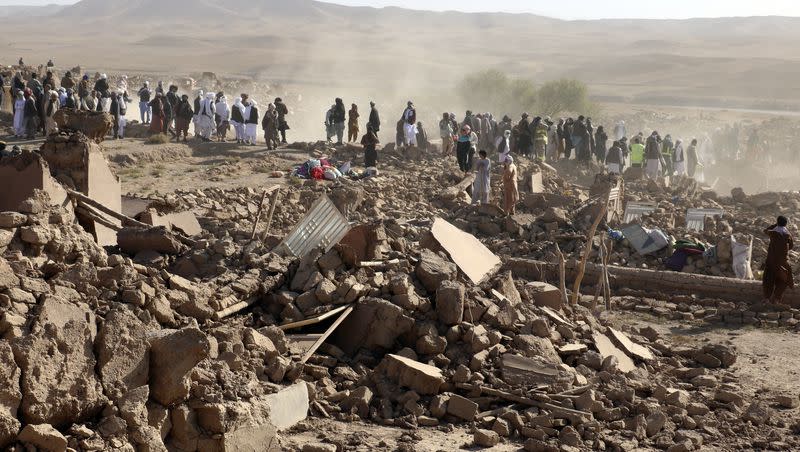Earthquake in Afghanistan kills thousands

On Saturday morning, a 6.3-magnitude earthquake hit Herat and surrounding villages in western Afghanistan. More than 2,400 people were killed, thousands were injured and many are still trapped, reports The Washington Post.
Several villages have “completely perished,” said Janan Saiq, a spokesman for the Taliban-run Ministry of Disaster Management, to the Post.
The earthquake’s epicenter was in two districts south of Herat, where mud brick houses collapsed within seconds. First responders compared the destruction to the damage caused by the 5.9-magnitude quake that struck eastern Afghanistan last year, which killed more than 1,000 people.
Desperate rescue attempts
Men dug through collapsed houses with shovels and their bare hands on Sunday, in desperate attempts to find survivors, reports The Associated Press and The Washington Post.
“Among the first volunteers to arrive was 32-year-old Ghulam Mehboob, who rushed to one of the devastated villages within hours of the first earthquake, hoping to be able to rescue people trapped under the rubble,” reports the Washington Post.
The article noted that Mehboob and others dug out “dozens of bodies” without finding a survivor. He returned to Herat on Sunday.
A journalist with Amu Television, an Afghan news stations, posted on X that he asked a friend who visited Nayeb Rafi village at the epicenter what survivors needed. His friend responded that he couldn’t find any villager who survived, apart from some shepherds who had not been in the village at the time of the quake.
I asked a friend who visited Nayeb Rafi village -- the epicentre of Herat earthquake -- on what the survivors needed most. He said he couldn't find any villager who had survived, apart from a few shepherds who were not in their village during the earthquake. 2k plus lives lost.
— Lotfullah Najafizada (@LNajafizada) October 8, 2023
International aid on the way
“There’s not much disaster management capacity and what there is can’t cover people on the ground,” said Salma Ben Aissa, the International Rescue Committee’s country director for Afghanistan, to The Associated Press. “The numbers (of dead) are increasing hour by hour,” the article said.
Doctors Without Borders has set up five medical tents at Herat General Hospital, the World Health Organization in Afghanistan has sent 12 ambulances to the area and the Afghan Red Crescent Society told the AP that seven teams were helping with rescue efforts.
The U.N. is also working with Taliban authorities to bring relief. “The United Nations and our partners in Afghanistan are coordinating with the de facto authorities to swiftly assess needs and provide emergency assistance,” United Nations Spokesperson Stéphane Dujarric said in a statement.
The UNICEF team deployed more teams to help, and it’s also providing 10,000 hygiene kits, 5,000 family kits, 1,500 sets of winter clothes, blankets, 1,000 tarps, and basic household items, according to a U.N. press release.
Providing assistance is complicated by the Taliban’s severe crackdown on women, including prohibiting them from working with international aid organizations.
In August, Samira Sayed Rahman, International Rescue Committee Afghanistan director of advocacy, said “Increasing hunger, natural disasters, unemployment, a banking and liquidity crisis, rights-violating restrictions on women and girls, and the lack of a functioning economy mean Afghans are facing a multitude of simultaneous crises.”
Before the earthquakes, staggering poverty was already impacting more than 90% of the nation’s population, with 91% of an average household income being spent only on food.
The World Food Program in Afghanistan began distributing food and is preparing to reach up to 70,000 earthquake-affected people. They also posted on X that “This terrible earthquake comes at a time of immense humanitarian needs when 15 million people do not know where their next meal will come from.”
🚨#Afghanistan: “This terrible earthquake comes at a time of immense humanitarian needs when 15 million people do not know where their next meal will come from.”
More about the #AfghanistanEarthquake: https://t.co/ouwPNSQwNi pic.twitter.com/t9GSvHknFt— World Food Programme in Afghanistan (@WFP_Afghanistan) October 8, 2023
Holly Richardson is the editor of Utah Policy

